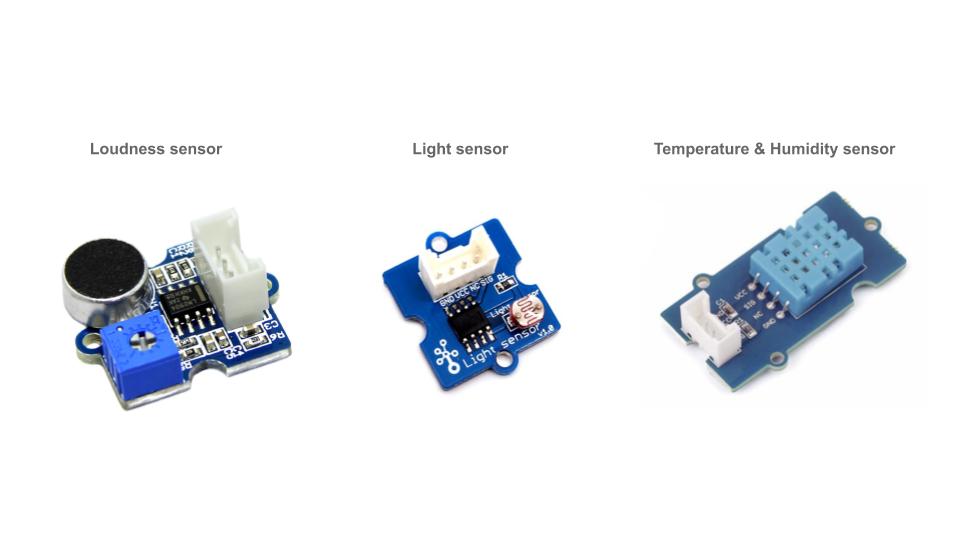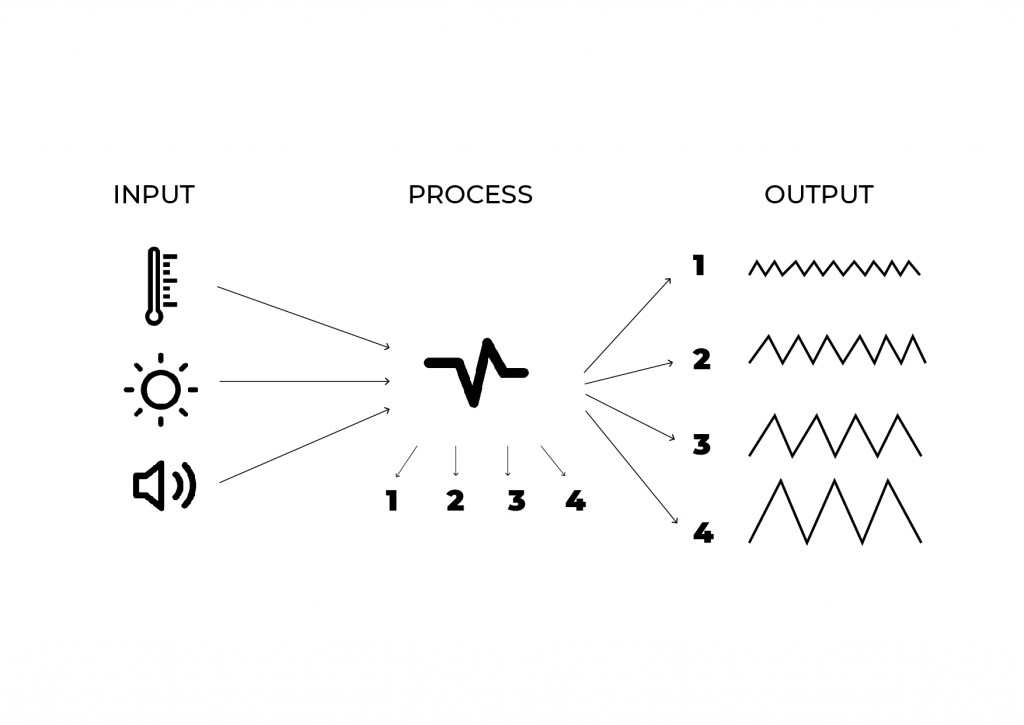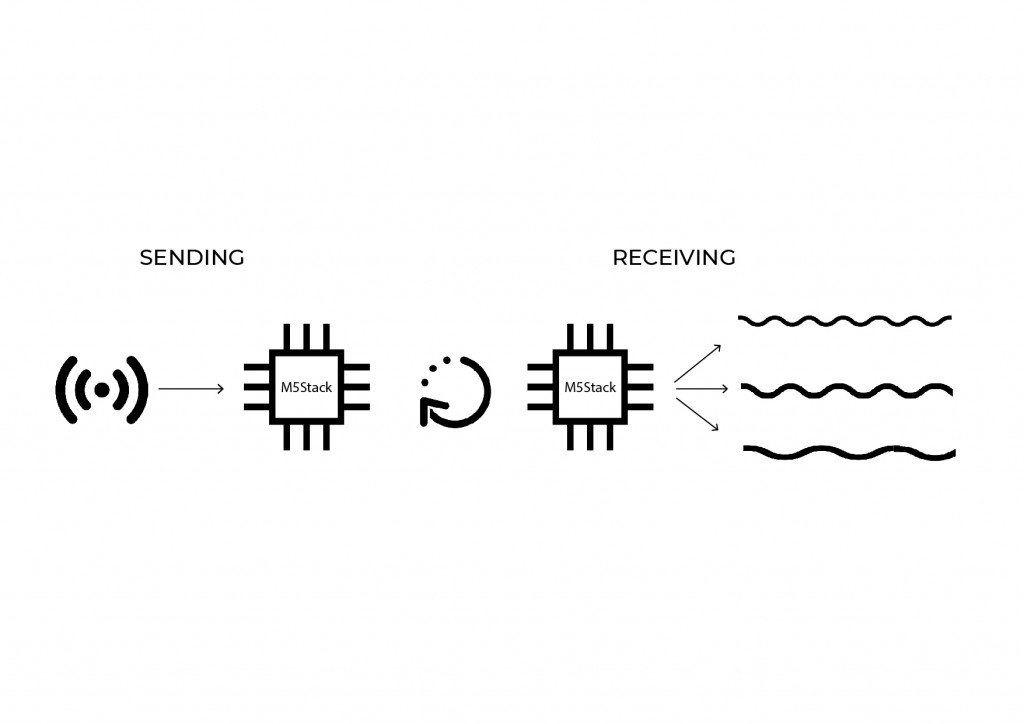Conditions of urban environments influence people’s behavior and activity in public places. The liveness of public space differs a lot due to the weather and time periods. As far as we are concerned, in order to visualize how the city operates we can monitor condition of public spaces by setting two main parameters: temperature and light(daytime). Therefore, that two impact people presence a lot. In addition, we use loudness sensor to identify and quantify people presence in public space.
The project itself consists of 3 strings that’s form represents real time situation. Each string corresponds to a different sensor and performs a number of loops according to the value of environmental data received.
Workflow. System operation.
The hardware used in that project: 6 DC motors, 6 Mosfets, 2 M5Stacks, 2 9V power sources. Data received from each sensor was categorized for 4 different ranges (from max to min) and converted to 4 duty cycles(PMW signal) respectively. Therefore, highest values lead to highest duty cycle and consequently to the highest speed of motors rotation. The fastest rotation resulting in increased number of loops on the string.
In summary, M5Stack receives values from sensors and uploads them to the platform. The second M5stack reads values and processes them into analog voltage signal. By doing so, it changes speed of motors rotation. Hence, number of loops on each string visualizes real-time public space condition.
According to everything mentioned above, we are concerned that the next step of system development is the opportunity to immediately introduce changes as a reflection on environmental conditions.
</p>
Urban String Theory is a project of IAAC, Institute for Advanced Architecture of Catalonia
developed at Introduction to Programming and Physical Computing, e.g. Master in City and Technology,
in 2020-2021 by:
Students: Kushal Saraiya, Linara Salikhova
Faculty: Angel Muñoz, Cristian Rizzuti


